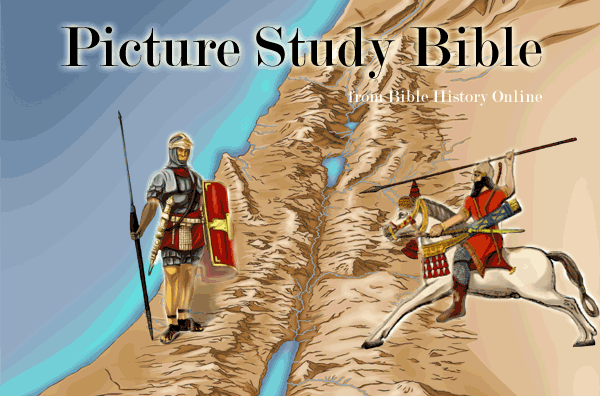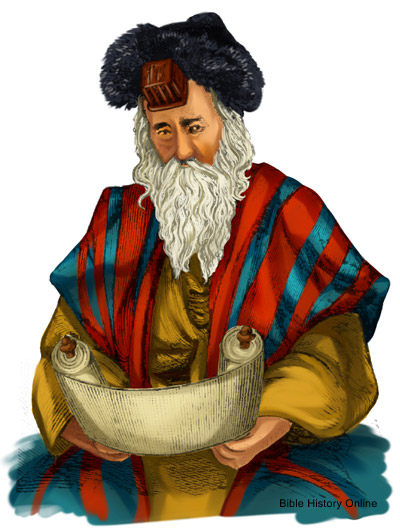Hebrews 10:25 Not forsaking the assembling of ourselves together, as the manner of some is; but exhorting one another: and so much the more, as ye see the day approaching. - Free Bible Online
Hebrews 10:25 not forsaking our own assembling together, as is the habit of some, but encouraging [one another]; and all the more, as you see the day drawing near.
25. assembling of ourselves together--The Greek,
"episunagoge," is only found here and
2Th 2:1
(the gathering together of the elect to Christ at His coming,
Mt 24:31).
The assembling or gathering of ourselves for Christian communion in
private and public, is an earnest of our being gathered together to Him
at His appearing. Union is strength; continual assemblings together
beget and foster love, and give good opportunities for
"provoking to good works," by "exhorting one another"
(Heb 3:13).
IGNATIUS says, "When ye frequently, and in numbers
meet together, the powers of Satan are overthrown, and his mischief is
neutralized by your likemindedness in the faith." To neglect such
assemblings together might end in apostasy at last. He avoids the
Greek term "sunagoge," as suggesting the Jewish
synagogue meetings (compare
Re 2:9).
as the manner of some is--"manner," that is, habit, custom. This
gentle expression proves he is not here as yet speaking of
apostasy.
the day approaching--This, the shortest designation of the day
of the Lord's coming, occurs elsewhere only in
1Co 3:13;
a confirmation of the Pauline authorship of this Epistle. The Church
being in all ages kept uncertain how soon Christ is coming,
the day is, and has been, in each age, practically always near;
whence, believers have been called on always to be watching for it as
nigh at hand. The Hebrews were now living close upon One of those great
types and foretastes of it, the destruction of Jerusalem
(Mt 24:1, 2),
"the bloody and fiery dawn of the great day; that day is the day of
days, the ending day of all days, the settling day of all days, the day
of the promotion of time into eternity, the day which, for the Church,
breaks through and breaks off the night of the present world" [DELITZSCH in ALFORD].
JFB.
Questions Related to this Verse
Where in Scripture does it mention The guilt and punishment of Apostasy?Where in Scripture does it mention worship?
Where in Scripture does it say To worship God?
Select a Chapter
-
Hebrews 1 |
Hebrews 2 |
Hebrews 3 |
Hebrews 4 |
Hebrews 5 |
Hebrews 6 |
Hebrews 7 |
Hebrews 8 |
Hebrews 9 |
Hebrews 10 |
Hebrews 11 |
Hebrews 12 |
Hebrews 13 |
Select a Book of the Bible
-
Genesis |
Exodus |
Leviticus |
Numbers |
Deuteronomy |
Joshua |
Judges |
Ruth |
1 Samuel |
2 Samuel |
1 Kings |
2 Kings |
1 Chronicles |
2 Chronicles |
Ezra |
Nehemiah |
Esther |
Job |
Psalms |
Proverbs |
Ecclesiastes |
Song of Solomon |
Isaiah |
Jeremiah |
Lamentations |
Ezekiel |
Daniel |
Hosea |
Joel |
Amos |
Obadiah |
Jonah |
Micah |
Nahum |
Habakkuk |
Zephaniah |
Haggai |
Zechariah |
Malachi |
Matthew |
Mark |
Luke |
John |
Acts |
Romans |
1 Corinthians |
2 Corinthians |
Galatians |
Ephesians |
Philippians |
Colossians |
1 Thessalonians |
2 Thessalonians |
1 Timothy |
2 Timothy |
Titus |
Philemon |
Hebrews |
James |
1 Peter |
2 Peter |
1 John |
2 John |
3 John |
Jude |
Revelation |
The Book of Hebrews
Hebrews 1:1-3 - God, who at sundry times and in divers manners spake in time past unto the fathers by the prophets, Hath in these last days spoken unto us by [his] Son, whom he hath appointed heir of all things, by whom also he made the worlds; Who being the brightness of [his] glory, and the express image of his person, and upholding all things by the word of his power, when he had by himself purged our sins, sat down on the right hand of the Majesty on high;
Hebrews 8:6 - But now hath he obtained a more excellent ministry, by how much also he is the mediator of a better covenant, which was established upon better promises.
Hebrews 11:1-3 - Now faith is the substance of things hoped for, the evidence of things not seen. For by it the elders obtained a good report. Through faith we understand that the worlds were framed by the word of God, so that things which are seen were not made of things which do appear.
Hebrews in The New Testament - A Brief Overview
Introduction to The Book of Hebrews
Brief Summary. The Main theme of the book of Hebrews can be found in the opening verses. Jesus Christ is clearly greater than anything that the Old Covenant had produced. Jesus is the great high priest, the eternal mediator between God and man who never stops mediating, and is the perfect fulfillment of all prophecies and types and shadows pointing to the Hebrew Messiah within the Old Covenant. The book of Hebrews unveils Christ as the One who is greater than each of the types and shadows that were pointing to him in the Old Covenant. Moses was the great lawgiver, but Christ was the perfect fulfillment of the law. The high priest in the Old Testament offered sacrifices each year, Jesus the eternal high Priest offered himself once and for all. The promises contained in the Old Covenant were for a season, but the New Testament is built on better promises that are forever written on men's hearts.
Summary of The Book of Hebrews
Purpose. The main purpose of the epistle is to establish Christianity as being superior to the Law. The writer exalts the superiority of Christ to angels, to Moses and Joshua, and to the Levitical high-priesthood. The book of Hebrews also makes a contrast between the tabernacle and its sacrifices and the sacrifice of Christ. The write strongly warns the Hebrew Christian to remain faithful to the Christian religion and its principles and to separate from Judaism, which had served its purpose and which was about to lose their rituals, sacrifices, and Temple.
Audience. The writer titles his epistle "To the Hebrews" and every chapter and verse of the book is clearly designed to instruct and encourage those who were Hebrew in blood and had become followers of Jesus Christ. It appears that the Temple was still standing at the time this epistle was written because it is often alluded to.
Author. Unknown, evidence points to Paul. There has been much controversy regarding the authorship of the book of Hebrews. Some say that it was written by Barnabas, others say it was Luke, or Apollos. The author of the book does not state his name, but it is definitely Pauline in style. A greater number of scholars have attributed this book to Paul than any other author. The writer refers to "our brother Timothy" (Hebrews 13:23) and "they of Italy" (Hebrews 13:24). It also appears that the writer was imprisoned, from his request for prayers that he might be restored to his readers. Paul was imprisoned several times and this could refer to any of those. The only absolute conclusion is that which Origen expressed: "God only knows who wrote the Epistle to the Hebrews."
Date. The book of Hebrews was probably written shortly after AD 60.
Place Written. It says in Hebrews 13:24 "They of Italy salute you" and this phrase indicates that the letter was written from Italy. It is probable that the Epistle was written near his second Roman imprisonment, about 60-62 AD.
Outline of the Book of Hebrews
Christ Greater Than the Prophets and Angels - Chapters 1-2
Christ Greater Than Moses and Joshua - Chapters 3-4
Christ Greater Than the Aaronic Priesthood - Chapters 5-8
Christ's New Covenant Greater Than the Old - Chapters 8-10
Faith in Christ Greater Than the Law - Chapters 11-13

The Name Jesus In Ancient Hebrew Text
"Yeshua" in First Century Hebrew Text. This is how the name "Jesus"
would have been written in ancient Hebrew documents. The four letters or
consonants from right to left are Yod, Shin, Vav, Ayin (Y, SH, OO, A).
Jesus is the Greek name for the Hebrew name Joshua or Y'shua which means
"The LORD or Yahweh is Salvation".
Hebrews Maps and Resources
Map of the Roman Empire (14 A.D.) - This map reveals the Roman Empire during the time shortly after the birth of Jesus, in 14 AD at the time of the death of Augustus. The order which prevailed in this extensive empire, the good military roads, and the use of Koine Greek as the general language of culture throughout the area were among the factors which multiplied the rapid spread of the Gospel of Jesus Christ. (Color Map)
Map of Paul's First Missionary Journey (48 A.D.) - This map reveals the areas in Asia Minor where Paul visited in his first missionary journey. Around 48 AD, in the springtime, Paul and his companions Barnabas and Mark were sent on a mission from the church in Antioch. This would be the first of Paul's Missionary Journey's. (Color Map)
Map of Paul's Second Missionary Journey (51 A.D.) - This map reveals the areas in Asia and Greece where Paul visited in his second missionary journey. Paul re-visits a couple cities in Asia, one of which was Lystra where he was stoned and left for dead a few years earlier. He later has a vision that leads him over to Greece and Paul and his companions travel and minister in various cities in Greece (Philippi, Thessalonica, Berea, Athens and Corinth. Later Paul returns to Ephesus and finally to Caesarea and Antioch. (Color Map)
Map of Paul's Third Missionary Journey (54 A.D.) - This map reveals the areas in Asia and Greece where Paul visited in his third missionary journey. On Paul's third missionary journey he returned to the cities he had first visited on his first missionary journey. During this time he decided to remain in Ephesus for about 3 years, and this city was the main focus of his activities and an important Christian community (Acts 19). (Color Map)
Map of the New Testament World - This map reveals the "Nations" within the ancient world during the first century A.D., the time of the New Testament. The map includes the areas of Israel, Asia, Greece, and Italy. (Color Map)
Map of New Testament Greece This map reveals the cities within Greece in the ancient world during the first century A.D.,The map includes the principal cities of Greece like: Athens, Corinth, and Thessalonica, and provinces like Macedonia and Achaia. (Color Map)
Map of New Testament Asia - This map shows the cities within
Asia Minor during the first century A.D., the time of the New
Testament. The map includes the principal cities of Asia
including Tarsus, Ephesus, and Colossae, and provinces like
Galatia and Pamphilia. (Color Map)
Bibliography Information
Free Bible Online Picture Study Bible, King James Version. New York: American Bible Society: www.free-bible.com, 1995-2013. Bible History Picture Study Bible. May 18, 2024.
- King James Bible Home
- Free Bible Home Page
- Bible Encyclopedia (ISBE)
- Online Bible (KJV)
- Naves Topical Bible
- Smith's Bible Dictionary
- Easton's Bible Dictionary
- Fausset's Bible Dictionary
- Matthew Henry Bible Commentary
- Hitchcock's Bible Dictionary
Read The Bible
- 1599 Geneva Bible (GNV)
- 21st Century King James Version (KJ21)
- American Standard Version (ASV)
- Amplified Bible (AMP)
- Amplified Bible, Classic Edition (AMPC)
- Authorized (King James) Version (AKJV)
- BRG Bible (BRG)
- Christian Standard Bible (CSB)
- Common English Bible (CEB)
- Complete Jewish Bible (CJB)
- Contemporary English Version (CEV)
- Darby Translation (DARBY)
- Disciples’ Literal New Testament (DLNT)
- Douay-Rheims 1899 American Edition (DRA)
- Easy-to-Read Version (ERV)
- English Standard Version (ESV)
- English Standard Version Anglicised (ESVUK)
- Evangelical Heritage Version (EHV)
- Expanded Bible (EXB)
- GOD’S WORD Translation (GW)
- Good News Translation (GNT)
- Holman Christian Standard Bible (HCSB)
- International Children’s Bible (ICB)
- International Standard Version (ISV)
- J.B. Phillips New Testament (PHILLIPS)
- Jubilee Bible 2000 (JUB)
- King James Version (KJV)
- Lexham English Bible (LEB)
- Living Bible (TLB)
- Modern English Version (MEV)
- Mounce Reverse Interlinear New Testament (MOUNCE)
- Names of God Bible (NOG)
- New American Bible (Revised Edition) (NABRE)
- New American Standard Bible (NASB)
- New American Standard Bible 1995 (NASB1995)
- New Catholic Bible (NCB)
- New Century Version (NCV)
- New English Translation (NET)
- New International Reader's Version (NIRV)
- New International Version - UK (NIVUK)
- New International Version (NIV)
- New King James Version (NKJV)
- New Life Version (NLV)
- New Living Translation (NLT)
- New Matthew Bible (NMB)
- New Revised Standard Version (NRSV)
- New Revised Standard Version Catholic Edition (NRSVCE)
- New Revised Standard Version, Anglicised (NRSVA)
- New Revised Standard Version, Anglicised Catholic Edition (NRSVACE)
- New Testament for Everyone (NTE)
- Orthodox Jewish Bible (OJB)
- Revised Geneva Translation (RGT)
- Revised Standard Version (RSV)
- Revised Standard Version Catholic Edition (RSVCE)
- The Message (MSG)
- The Voice (VOICE)
- Tree of Life Version (TLV)
- World English Bible (WEB)
- Worldwide English (New Testament) (WE)
- Wycliffe Bible (WYC)
- Young's Literal Translation (YLT)
Table of Contents
Main Menu
- Ancient Assyrian Social Structure
- Ancient Babylonia
- Ancient Canaan During the Time of Joshua
- Ancient History Timeline
- Ancient Oil Lamps
- Antonia Fortress
- Archaeology of Ancient Assyria
- Assyria and Bible Prophecy
- Augustus Caesar
- Background Bible Study
- Bible
- Biblical Geography
- Fallen Empires - Archaeological Discoveries and the Bible
- First Century Jerusalem
- Glossary of Latin Words
- Herod Agrippa I
- Herod Antipas
- Herod the Great
- Herod's Temple
- High Priest's in New Testament Times
- Jewish Literature in New Testament Times
- Library collection
- Map of David's Kingdom
- Map of the Divided Kingdom - Israel and Judah
- Map of the Ministry of Jesus
- Matthew Henry Bible Commentary
- Messianic Prophecy
- Nero Caesar Emperor
- Online Bible Maps
- Paul's First Missionary Journey
- Paul's Second Missionary Journey
- Paul's Third Missionary Journey
- Pontius Pilate
- Questions About the Ancient World
- Tabernacle of Ancient Israel
- Tax Collectors in New Testament Times
- The Babylonian Captivity
- The Black Obelisk of Shalmaneser
- The Books of the New Testament
- The Court of the Gentiles
- The Court of the Women in the Temple
- The Destruction of Israel
- The Fall of Judah with Map
- The History Of Rome
- The Incredible Bible
- The Jewish Calendar in Ancient Hebrew History
- The Life of Jesus in Chronological Order
- The Life of Jesus in Harmony
- The Names of God
- The New Testament
- The Old Testament
- The Passion of the Christ
- The Pharisees
- The Sacred Year of Israel in New Testament Times
- The Samaritans
- The Scribes
Ancient Questions
- How did the ancient Greeks and Romans practice medicine and treat illnesses?
- What were the major contributions of ancient Babylon to mathematics and astronomy?
- How did the ancient Persians create and administer their vast empire?
- What were the cultural and artistic achievements of ancient India, particularly during the Gupta Empire?
- How did ancient civilizations like the Incas and Aztecs build their remarkable cities and structures?
- What were the major trade routes and trading practices of the ancient world?
- What was the role of slavery in ancient societies like Rome and Greece?
- How did the ancient Mayans develop their sophisticated calendar system?
- What were the key events and significance of the Battle of Thermopylae in ancient Greece?
- What was life like for women in ancient Rome?
Bible Study Questions
- What does biblical archaeologist said about hieroglyphics?
- Where is the Negev where Abram went to in Genesis?
- What is the name of Ramallah in the Bible?
- How do we approach and study the historical and cultural context of biblical passages?
- What is the significance of the Psalms in personal and corporate worship?
- How do we discern and apply biblical principles to contemporary ethical issues?
- What is the biblical perspective on the nature of God's love and mercy?
- How do we interpret and understand apocalyptic literature in the Bible?
- What are the different covenants in the Bible and their significance?
- How do we grow in spiritual maturity and develop a deeper understanding of the Word?
About
Welcome to Free Bible: Unearthing the Past, Illuminating the Present! Step into a world where ancient history and biblical narratives intertwine, inviting you to explore the rich tapestry of human civilization.
Discover the captivating stories of forgotten empires, delve into the customs and cultures of our ancestors, and witness the remarkable findings unearthed by dedicated archaeologists.
Immerse yourself in a treasure trove of knowledge, where the past comes alive and illuminates our understanding of the present.
Join us on this extraordinary journey through time, where curiosity is rewarded and ancient mysteries await your exploration.
Recent posts
-

Personalized Baby Bibs for every Little
Every little one deserves to feel cherished and celebrated from the very start. These custom baby bibs, lovingly personalized with care, make the perf... -

The Art of Custom Home Design: Unveiling Wellcore Corporation's Expertise
In the ever-evolving panorama of contemporary production, customization reigns ultimate as a testament to innovation and the preference for a without ... -

Birthstones: A Sparkling Symphony of History, Symbolism, and Self-Expression
Birthstones, the ones fascinating gems linked to our delivery month, boast a records as rich and multifaceted because the jewels themselves. Their tal... -

The use of medicinal mushrooms by different religions of the world.
The integration of medicinal mushrooms into various religious practices around the world is a fascinating testament to their revered status across cul... -

Explore a Collection of Religious SVGs
Religious SVGs are versatile design elements that can be used to create a variety of personalized and meaningful projects. Whether you're looking to e...

